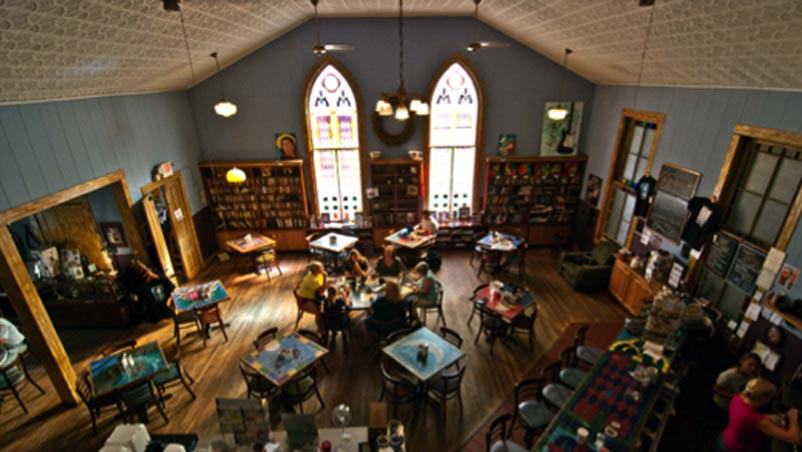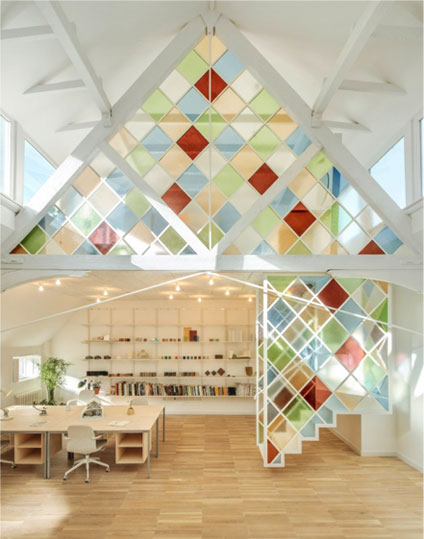
14 May Shared Sacred Spaces
The challenges we face at the St John St James Church in Roxbury are similar to the predicament faced by many worship spaces across United States today. The crux of this challenge lies in large spaces for worship being used by parishes that are often struggling with a declining membership. These shrinking congregations find it hard to support the financial burden of maintaining aging over-scaled structures for their current needs. Churches, once an object of inspiration and civic pride, now pose difficult decisions to their administrators.

A London church repurposed as co-working space.
Image Courtesy: deezeen.com
To help congregations thrive and reduce the financial stress, effective space utilization and rationalization is really important. Adaptive reuse offers administrators and religious cohorts an effective tool to tackle the above illustrated issues. Some might prefer to sell the building to a private developer who would then put in place a conversion strategy; others would like to implement the strategy themselves to possibly continue with religious use on a reduced footprint in addition to complementary uses for financial support.
One of the most obvious strategies is to convert the church to a residential use. However, conversion to residential use comes with many other challenges. The original design of a church almost never makes it easy to subdivide for residential purpose. Conversions must tackle an aged structural design, multi-story tall windows, religious iconography and ornamentations. Further, the cost of conversion most likely will be higher than a demolition followed by new construction.
From both the use and revenue generation perspective the challenge and the opportunity lies in round–the-clock activation. From a real estate perspective, a large church building could be viewed as a possible “mixed use project” with office, residential, retail uses that compliment the originally intended religious purpose of the buildings.
Historically churches were the space where people came together, albeit for a religious use. May be the solution lies in the re-imagination of this space that allows people to congregate. Some successful examples across the country illustrate a strategy of opening doors to artists, non-profits and other organizations that do not have a need for owning real estate. The church could be envisioned as a neighborhood-oriented venue and community anchor, where people come together for purposes including and beyond worship. Coffee shops, day care centers, music venues, offices, or galleries that double as worship space combined with possible residential use through artist studios would create a vibrant building adapted to represent changing needs of changing times.



